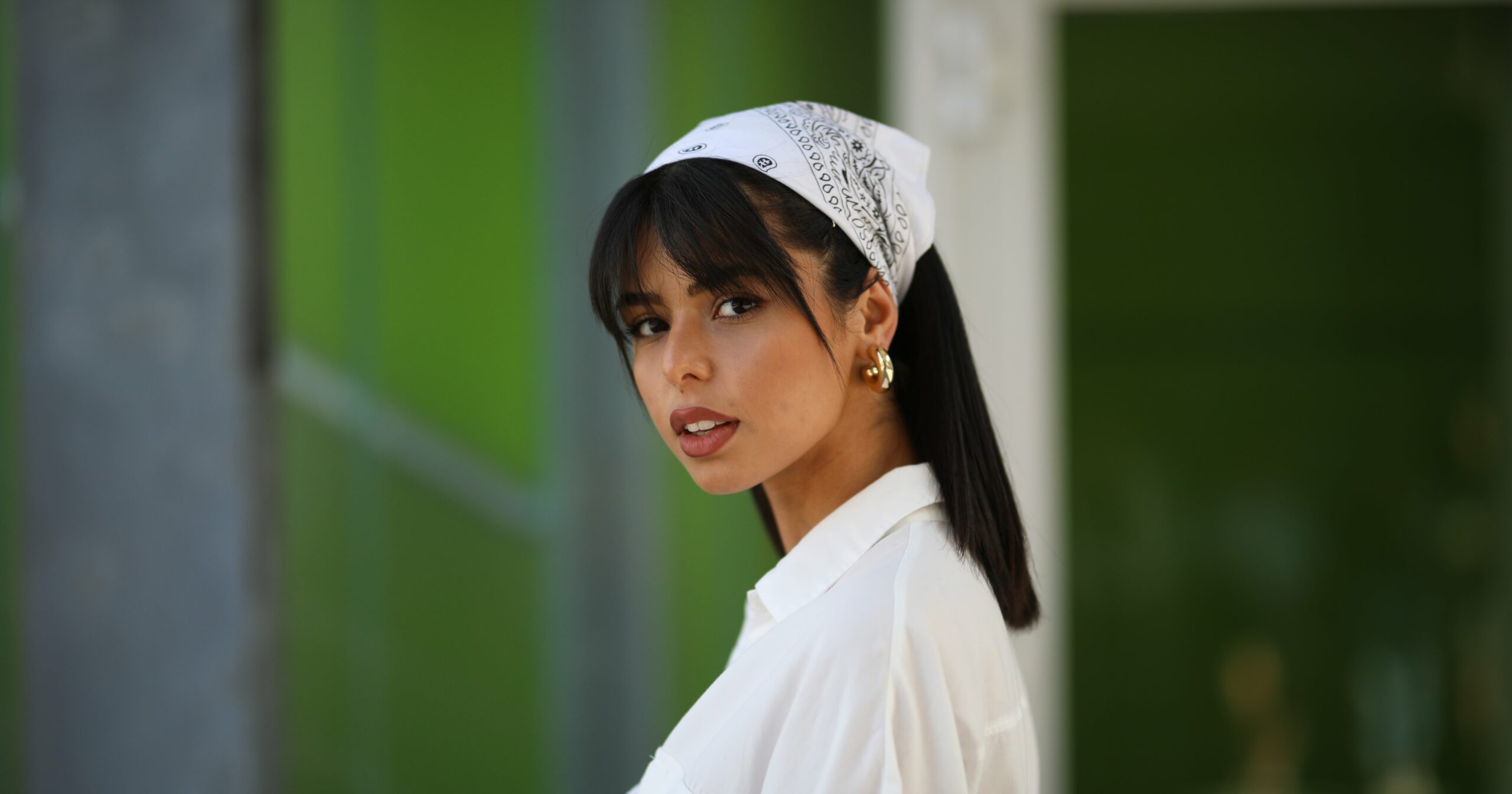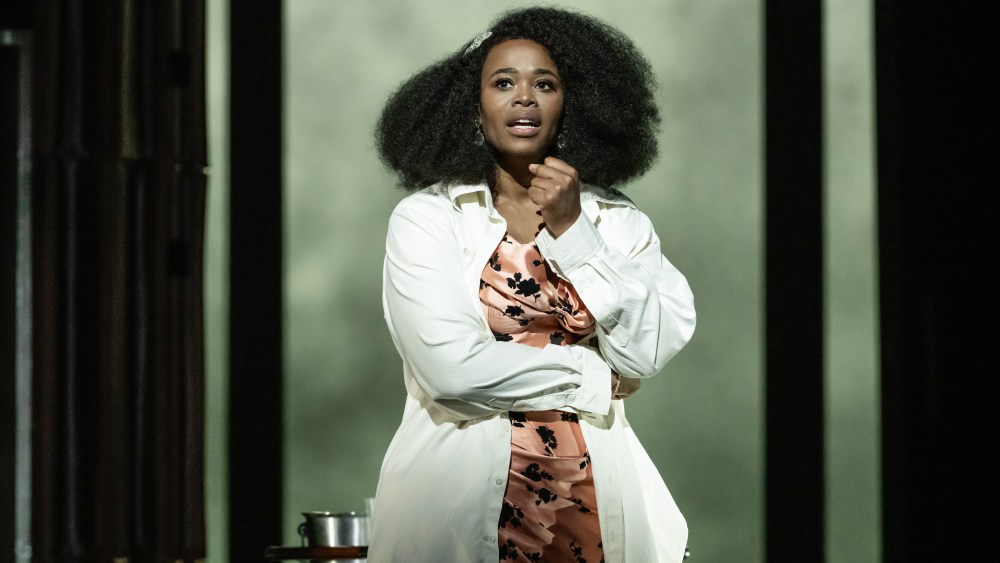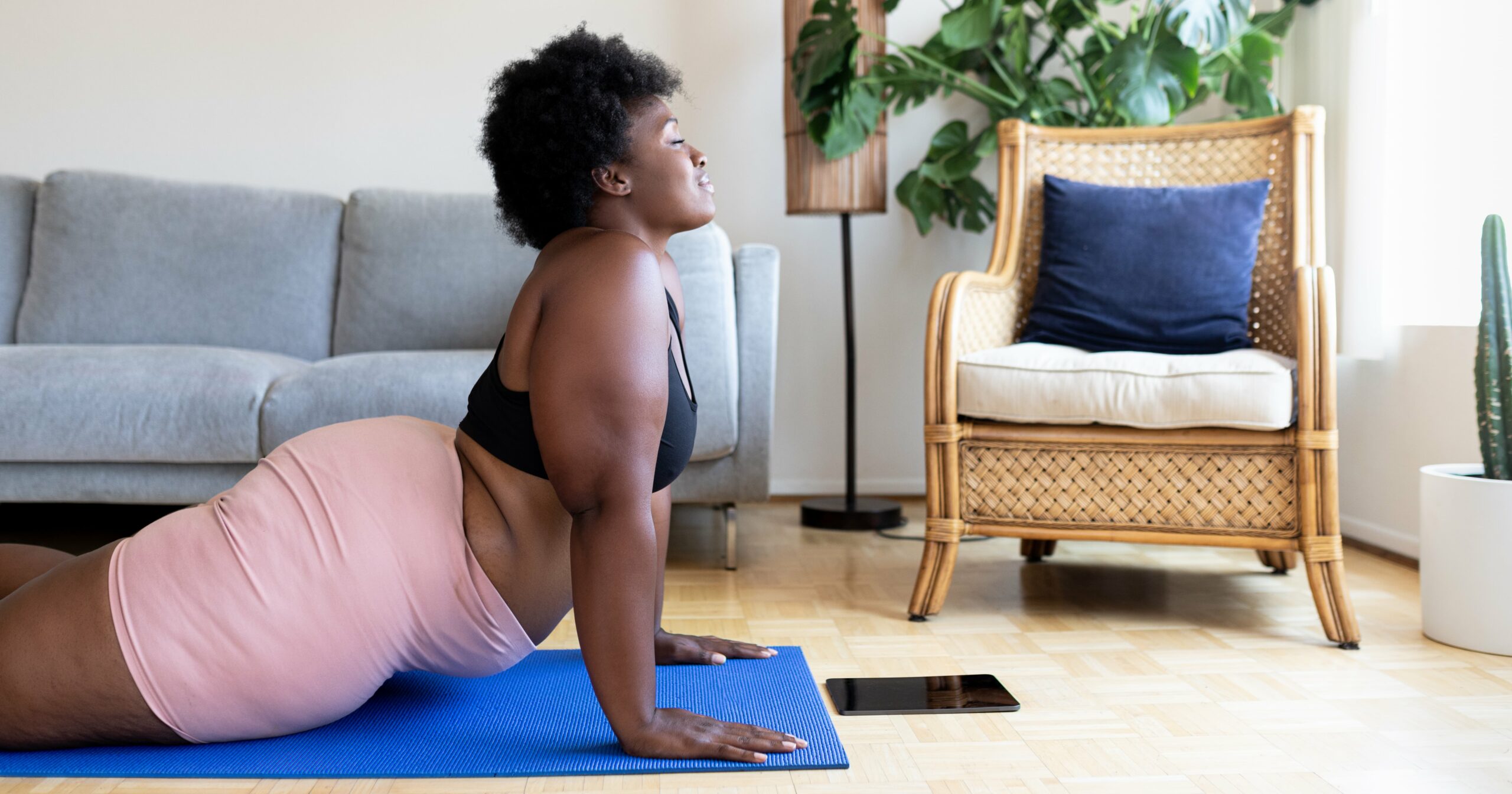A few years ago, if someone posed the question, “Should I get bangs?” the answer was usually a resounding “no.” For many people, bangs were something you spontaneously did after a major life event, like a particularly difficult breakup, and then regretted shortly thereafter (as in, right when you got home and looked in the mirror). That said, times have changed, and bangs are no longer a post-break-up faux pas – they’re a chic style that, as of late, everyone wants to get in on.
That’s because fringe is no longer limited to the straight-across look you might immediately think of when you hear the word. Whether it’s Birkin bangs, wispy bangs, or curtain bangs, there’s a style out there for everyone. Lately, though, there’s one particular iteration we’ve been seeing on the rise: french bangs. Even celebrities like Jenna Ortega and Olivia Wilde have tried the trend. We asked an expert to share everything you should know about french bangs, like what to ask for at the salon and how to style the look at home.
Experts Featured in This Article
Mara Roszak is a celebrity hairstylist based in Los Angeles.
What Are French Bangs?
French bangs are categorized by being short in the center of the forehead and longer toward the outer cheekbones. “They’re meant to be less of a statement bang and more of an integrated, effortless addition to your look,” celebrity hairstylist Mara Roszak tells PS. Plus, french bangs work for all hair lengths, types, and textures. She says, “These are the most flattering versatile bangs of all. They blend beautifully into the hair and highlight the cheekbones, and they elevate any look, even a simple ponytail or bun because they allow the face-framing pieces to fall out.”
If you’re thinking of switching things up at your next salon appointment and asking for french bangs, Roszak says it’s important to arrive with inspiration photos in hand. “Bring your stylist pictures of what you have in mind, and ask for a blended, soft bang that will highlight your cheekbones. You want these bangs to be a relatively thin section of hair on each side of the face, so make sure your stylist doesn’t start too far back. Starting an inch back from the hairline, your stylist should create a v-shape going from the center part out to the arch of your eyebrows. The center area in between the eyebrows would be the shortest area, angled longer as they go outward.”
Pro tip: Roszak says you’ll also want to make sure your stylist uses thinning shears to cut the french bangs because you want the end result to be a soft edge rather than a blunt one.
How to Maintain French Bangs at Home
In order to keep your cut looking fresh, Roszak says it’s important to use a high-performing shampoo and conditioner like the
When it comes to styling this look, Roszak says it’s best to keep things casual. “The point of these bangs is they are effortless chic,” she says. “Using flat clips, pin the center and outer part of the bangs so they dry naturally without having to blow dry. If you are blow drying, use a medium-sized boar bristle brush to dry them down and away from the face.”
If you opt to air-dry your hair, we’d recommend using a texturizing spray like the
Ready for your new ‘do? Ahead, we’ve rounded up some of our favorite french bang inspiration photos for you to bring with you to your next salon appointment.



